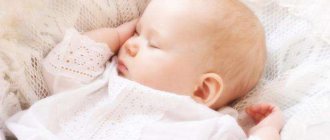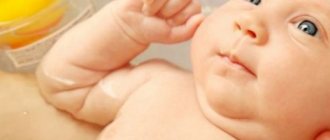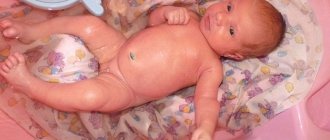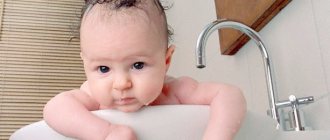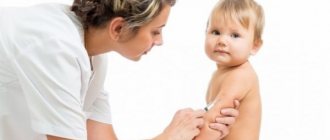How to give air baths to a child correctly
Last update: 01/15/2020
The baby's body is partially able to regulate temperature depending on environmental conditions.
It is important to provide the child with optimal climatic conditions for the normal functioning of the body. The optimal air temperature in the room is 20-22*, humidity 40-50%, in addition, regular ventilation is necessary.
It is also necessary to harden children from an early age. During hardening, gradual adaptation to different living conditions occurs and local immunity is strengthened. Hardening reduces the likelihood of a severe course of the disease.
Simple procedures will help you with this, which we will describe below.
Air baths for children, all the nuances
The procedure for taking air baths should be performed every day. A prerequisite is that the child is completely healthy. The room where the child will take baths should be ventilated. Fresh air will cool the room and saturate it with fresh air and moisture. Airing is carried out only if there are no crumbs in it, otherwise he may get sick. After ventilation, the air temperature in the room should be about 21 ° C.
As soon as the room has warmed up, you can bring the baby in and undress him. This is best done on a cotton sheet so that the baby’s delicate skin comes into contact with everything natural. It is necessary to put an oilcloth under the sheet so that in case of an incident the child does not wet the surface where he is lying.
Doctors who care for newborns say that a newborn baby is able to retain body heat due to increased muscle tone.
If a child presses his legs to his tummy while taking air baths, it means he is cold, perhaps the room is not heated enough and he is uncomfortable. In this case, the air baths should be terminated.
What is an air bath for a child
It is best to start hardening a newborn with air baths. This is a simple but effective way to strengthen the immune system. The benefits of this procedure for the skin are difficult to overestimate.
When to start this type of hardening? The earlier the better. It should be borne in mind that this is a gentle procedure that does not pose any risk to the baby if you perform it under suitable conditions.
You do not need any special knowledge for air hardening. The only thing that is needed from parents is a desire to improve the health of their child and knowledge of how often, under what conditions and for what duration to carry out the procedure.
Air baths for infants are a procedure in which the child is naked for some time. When it is cold outside, such hardening should be carried out only indoors, in the summer - also in the fresh air.
What you need to know about air baths?
Air baths are:
- The common one is being in the fresh air in a completely naked state.
- Partial – partial exposure: legs and torso.
- Warmish – ambient temperature 22 degrees.
- Cool - ambient temperature 17-20 degrees.
- Cold – the ambient temperature is less than 16 degrees.
The air hardening procedure begins at an early age. As a rule, this happens from two months of the baby’s life, when light massage and gymnastics are recommended during the swaddling process. For a one-year-old child and older, the temperature in the room during an air bath is slightly reduced to 18C. It is recommended to combine a hardening air bath with gymnastics. During the procedure, a one-year-old child should be dressed in a T-shirt, shorts and slippers, a child 4-7 years old only in shorts and slippers for 10-15 minutes.
What are the benefits of this procedure for the body?
- The body's resistance to infections, especially ARVI, is strengthened.
- The baby develops a thermoregulation mechanism that saves him from overheating and hypothermia.
- This is a powerful prevention of inflammatory skin diseases (diaper dermatitis, diaper rash, etc.).
- The procedure calms the child's nervous system.
- The body is saturated with oxygen.
- Appetite and sleep improve.
Why is this happening? It's easy to explain. When the baby is still growing in the mother's belly, the placenta protects it. Viruses and drafts are not scary for him; the child is constantly at the same temperature. Therefore, after birth, his immune system and thermoregulation mechanism are just beginning to develop.
Exposure to air helps to activate and strengthen them. Just a few minutes without clothes teaches the baby’s body to effectively respond to temperature changes. And if you constantly wrap your child up and protect him from the slightest temperature changes, his defense mechanisms will simply stop working. As a result, the child will be constantly sick.
Air baths for a newborn: how to do it
Air baths for infants should begin approximately 2-3 weeks after birth. To ensure that the procedure is as effective as possible and does not pose any danger, follow these recommendations:
- In the first month of the baby’s life, it will be enough to leave him without clothes for a couple of minutes when changing diapers/diapers. How many times should I repeat air baths for a newborn? Two or three times a day is enough.
- When the baby is one and a half months old, combine hardening with massage and gymnastic exercises. It is advisable to take air baths at a temperature of 19-20 degrees Celsius. Remember that you need to lower the air temperature in the room gradually.
- By six months, it is advisable to increase the duration of the procedure to ten minutes several times a day. Start with three minutes and increase the duration of hardening by one minute every day.
- Make sure that the child does not become hypothermic under any circumstances. If you notice a sign such as goose bumps, immediately dress your baby and reduce the procedure time. If you have problems with sleep, appetite, or acute illnesses, do not harden.
- Carry out the procedure only when the child is healthy and in a good mood. Combine hardening with play so that it evokes positive emotions in the baby.
Remember that the most important thing in this matter is regularity. To achieve the desired effect and truly improve your child’s health, repeat the procedures every day. Reduce the air temperature and increase the hardening duration gradually. Constantly monitor your baby during hardening. Make sure that it does not turn pale or become covered with goosebumps. At the slightest sign of hypothermia, finish the procedure immediately. Air baths after bathing should not be given to newborn children.
How and when to carry out the procedure
Air baths for newborns are carried out indoors and outdoors. They can be complete (when the child is undressed), or partial (an ordinary walk on the street).
How to carry out air procedures indoors
In the room, aerotherapy is carried out in a ventilated area. Every time you change your baby's clothes, it is advisable to leave him undressed for a while.
Since newborns have not yet developed the ability to thermoregulate, during the first days they are left naked for 1-2 minutes, gradually increasing the time. At three months, children can be left undressed for 30-40 minutes.
In the first weeks, enough time is required to carry out air procedures, which is spent on changing the baby’s clothes and treating skin folds. In addition, newborns cannot be completely undressed. For 2-3 minutes, remove the cap from your head, after a while - the vest, and then the rompers. A one-month-old baby is left undressed for 10-15 minutes. At this time, you can put him on his tummy. This pose helps strengthen the back muscles and has a beneficial effect on the digestive system.
To prevent the baby from being capricious, you can do exercises with him during air procedures. There is a set of exercises that are mandatory for newborns. You can play with the baby; after taking an air bath, the baby’s skin must be lubricated with a special baby cream or oil.
It is important to know! A child should take an air bath at a temperature above 22 degrees; there should be no draft in the room.
Pros and cons of air baths
If you follow all the above recommendations correctly, then hardening will bring only advantages to your child. The procedure will not have any disadvantages if you do not abuse it and sharply lower the air temperature.
To make the effect even more positive, combine regular air hardening with other preventive procedures. Firstly, ventilate the room more often. The best way is through the through method, when all windows and doors are open. Of course, the child should not be in the room at this time. When it is filled with fresh air, return the baby back.
It is desirable that as a result of ventilation the air temperature drops by a couple of degrees. There is no need to dress your child warmer after this. In the cold season, repeat ventilation 4-5 times a day for 5-10 minutes. In summer, leave windows open at all times.
Take your child for walks in the fresh air more often. At a temperature of at least 10 degrees below zero, babies 2-3 weeks old can already be outside. But remember that the first walk should last no more than 10-15 minutes. Gradually increase the walking time to one and a half to two hours.
Never dress your child warmer than necessary. He shouldn't sweat, but he shouldn't get too cold either. If a child is comfortable in his clothes, he sleeps well, breathes smoothly, his hands are warm, and his complexion is rosy.
If a child is suddenly hypothermic, his nose and hands become cold, his lips turn blue.
Water treatments for children
In order for your baby to be strong and healthy, he needs classes in the pool. Now there are a large number of schools and health centers that are happy to provide their services. However, not everyone can afford this luxury. For some parents, time does not allow it, for others, the family budget does not allow it. What to do? After all, the health of your child is very important. Therefore, parents can independently engage in water procedures with their baby.
It is best to teach your child to swim before he or she is one year old. There is an opinion that we can all swim from birth. And this is not surprising, because during our formation we are in an aquatic environment, in the womb, and water is our element. That is why the baby is not afraid of water. But if you don’t accustom him to it from birth, the baby will gradually wean himself off it and even begin to be afraid. So you need to not miss this moment and take advantage of the fact that your child splashes happily in the water and it amuses him, otherwise, as he gets older, it will be more and more difficult for you to accustom him to water.
One of the most effective water procedures is hardening. It is better to start it at a young age and little by little. Hardening helps relieve stress, strengthen the immune system, and improve blood circulation.
Some parents are afraid to risk teaching their child to swim on their own and still entrust their children to special centers and swimming pools. It's up to you. It is you who chooses what is best for you and your baby.
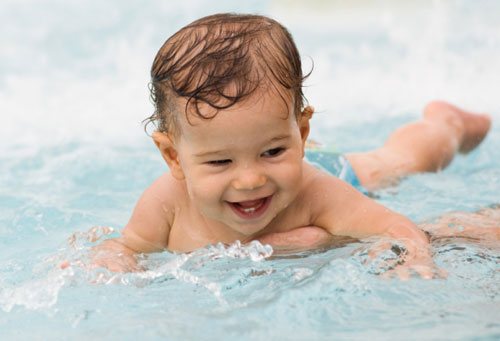
However, if you decide to teach your child yourself, then to achieve a positive result you need to follow several rules: • you must be able to float and swim; • you need to have a spacious bath, the best of course is a swimming pool; • it is best for teachers to act together (father and mother); • for greater effect, you need to study video tutorials and become familiar with Z. Firsov’s methodology. This technique includes the following points: • at 2-3 weeks you can safely begin preparing your baby for swimming; • teaching the baby needs to be made optimally fun and exciting; • the baby’s skin is very sensitive, so it is necessary to monitor the water temperature: 1–4 lessons — 37 °C, 5–8 — 36.5 °C, 9–13 — 36 °C, 14–19 — 35.5 °C, 20–23 - 34 °C, after 25 - 28 °C. • water activities continue throughout the year, at the end of which the baby will be able to swim, stay on the water, and even dive. Swimming is not only fun and a pleasant time for the baby and parents, but also the prevention of many diseases and strengthening the entire body.
Cosmetics for newborns La-Cri
Air baths are undoubtedly one of the best preventive remedies against skin diseases and, in particular, diaper dermatitis. But cosmetics also play an important role in skin care. Many cosmetics, even those intended for children, can cause allergies and irritation. Therefore, pediatricians advise giving preference to neutral, hypoallergenic products.
The La Cree skin care series is designed specifically for babies from the first days of life. It includes a medicated diaper cream, which is applied to the skin after an air bath. The cream nourishes and moisturizes the skin, protecting it from irritation.
The product prevents the formation of diaper rash, so it is advisable to use it before walks, since diaper rash can appear on the vulnerable skin of a baby even within a couple of hours in a wet diaper.
All these preventive methods, combined with natural cosmetics, will help you raise a healthy and cheerful baby.
Consumer Reviews
Katya (eapteka.ru)
“Excellent hypoallergenic cream! Fits the child perfectly. Apply a thin layer after changing a diaper and hygiene procedures. It seems to create a thin barrier between the skin and the diaper. The criterion for selection was the natural composition and the absence of parabens.”
Milana (eapteka.ru)
“The cream removes diaper rash very quickly! After I started using it constantly, the baby stopped having them altogether. Excellent cream and a good price!”
Physical education and sports
Air baths are the most favorable and common means of hardening. By helping to remove vapors and gases from the surface of the skin, air baths have a certain hygienic significance for the body. In addition, air baths, due to thermal irritation of the skin, have a physiological effect on the body. This is expressed primarily in the reflex narrowing and expansion of blood vessels with subsequent improvement in the functioning of the extremely delicate and complex mechanism of thermoregulation (heat generation and heat transfer), increased muscle tone and endurance of the cardiovascular system, an increase in the content of hemoglobin and red blood cells in the blood and many other favorable changes in organism.
The main factor affecting humans is air temperature. Everyone knows that the face and hands are least protected from the cold. And although they often get very cold, a person avoids colds and remains healthy.
An air bath can be either general, if the entire surface of the body is exposed to air, or partial (local), if only a separate part of it, for example, the hands, is exposed. The hardening effect in this case is associated primarily with the difference in temperature of the air and the surface of the skin. The air gap between the body and clothing usually has a constant temperature of about 27-28 ° C. The difference between the temperature of a clothed person's skin and the surrounding air is usually small, and therefore heat transfer is almost imperceptible. As soon as a person is freed from clothes, the process of heat transfer becomes more intense. The lower the external temperature, the more cooling we are exposed to.
Depending on the air temperature, air baths are divided into very cold (below 0°C), cold (0–8°C), moderately cold (9–16°C), cool (17–20°C), indifferent, or indifferent (21–22°С), and lukewarm (over 22°С). This division, of course, is arbitrary: in well-hardened people, the feeling of cold occurs at a lower temperature (Antropova M.V., 1982).
It is recommended to start taking air baths in a pre-ventilated room. Then, as they harden, transfer them to the open air. The best place for an air bath is shaded areas with green spaces, away from sources of possible air pollution with dust and harmful gases. Take baths lying down, reclining or moving. You should undress quickly, so that the air bath immediately affects the entire surface of the naked body and causes a quick and energetic reaction of the body.
The time of day for air hardening is not of fundamental importance, but it is better to perform the procedures in the morning, after sleep, in combination with morning exercises. It is recommended to take air baths on an empty stomach or at least 1.5 hours after meals.
When hardening with air, in addition to its temperature, it is necessary to take into account humidity and speed of movement. Relative humidity is the ratio of absolute humidity to the highest humidity at a given air temperature; it is expressed as a percentage. Air, depending on its saturation with water vapor, is usually divided into dry (up to 55%), moderately dry (from 56 to 70%), moderately humid (from 71 to 85%) and very humid (over 86%). It has been established that at high relative air humidity a person is colder than at low relative humidity (Antropova M.V., 1982).
Equally important is the speed of air movement. So, in cold, but calm, windless weather, a person is warmer than in warmer, but windy weather. The fact is that the layer of heated air near our body (the so-called boundary layer) is constantly changing, and the body heats more and more portions of air. Consequently, when there is wind, the body expends more heat than in calm weather. Wind causes an increase in heat transfer from the body. At high temperatures (up to 37 ° C) it protects a person from overheating, at low temperatures - from hypothermia. The combination of wind with low temperature and high air humidity is especially unpleasant.
Aerosols also have an effect on the body. They constantly “bombard” the skin of the body and the mucous membranes of the respiratory tract. The composition of aerosols is varied: for example, in air flows coming from the sea, sodium, iodide, bromide and magnesium salts predominate. The wind from large green areas carries tree and flower pollen and microorganisms. It should also be taken into account that the content of aerosols in the air is uneven.
Exercise is essential during cool and cold baths. If the weather is damp and windy, the duration of the air bath is reduced. In case of rain, fog and air speed above 3 m/s, it is better to move the procedures indoors.
In winter, air baths are carried out indoors and combined with gymnastics and subsequent water procedures. For the youngest children (up to one year), they are combined with the process of swaddling and changing clothes. At this time (from 2-4 to 10-12 minutes), room air, the temperature of which should not be lower than 20 and higher than 22 ° C, unhinderedly affects the skin receptors.
Air hardening can be started at any age. From the end of the second month of the child’s life, massage and gymnastics are performed during one of the swaddlings. For children aged one year and older, the room temperature during an air bath is gradually reduced to 18°C. An air bath is combined with morning exercises (5-7 minutes), the child does it in a T-shirt, shorts and slippers. Children 4-7 years old remain in shorts and slippers for 10-15 minutes, of which 6-7 minutes do gymnastics (Antropova M.V., 1982).
In summer, air baths are carried out outdoors, mainly in the morning, in places protected from direct sunlight and strong winds. Children must remain half-naked for a certain period of time. The body is exposed as directed by the doctor in a certain order: first the upper and lower limbs, and then the torso. Hardening of children with air baths begins in the summer in calm weather at an air temperature of at least 20°C. During air baths, it is recommended to play games or do some active activities. The duration of the first baths should not be more than 15 minutes, then it is gradually increased.
Hardening of school-age children begins at an air temperature of at least 16-18°C, initially for 5-10 minutes, and then gradually increases the duration of the procedure to 25 minutes. They also gradually move on to hardening at a lower temperature, but not lower than 12°C, while reducing the duration of the session to 10 minutes and combining it with physical exercise. In spring and summer, it is recommended that half-naked children stay in the shade in the fresh air for up to 3-5 hours a day, depending on the weather (Antropova M.V., 1982).
When carrying out air baths, the health status of children and adolescents and their individual reaction are taken into account. Children, especially weakened ones, should not be allowed to become cold, trembling, goosebumps, or cyanosis should occur.
The first air baths for healthy people aged 18 years and older should last 20-30 minutes at an air temperature of 15-20°C. Subsequently, the duration of the procedures increases daily by 5-10 minutes and is thus brought to 2 hours. The next stage is air baths at a temperature of 15-10 ° C for 15-20 minutes. At this time, it is imperative to perform vigorous movements. Only well-seasoned people can take cold baths and only after a medical examination. The duration of such baths should not exceed 5-10 minutes. Cold baths should be completed by rubbing the body and a warm shower (Antropova M.V., 1982).
When hardening with air, you should not bring yourself to the point of chills. At the first signs of severe cooling, you need to jog and do some gymnastic exercises.
Skin is that part of the human body that comes into contact with air and serves as a protective cover. There is a close connection between skin condition and health. The skin is the gateway through which the healing powers of nature flow into the body. When the pores become clogged for some reason (for example, as a result of a burn or paint or resin coming into contact with the skin), the person loses consciousness or even dies. This suggests that the skin is the most important respiratory organ. It also performs an excretory function, removing harmful substances from the blood through the sweat glands.
There is no need to spoil your skin with too warm clothes, let it breathe every day, take air baths. This is the same necessity as the need for water and food. When a person exposes the skin, metabolic products and toxins released through sweat are removed from its surface, and oxygen penetrates the skin, destroying the carbon monoxide produced by the body (by the way, it is this that accumulates in the body that creates the ground for the development of cancer).
Air baths are offered as a therapeutic and prophylactic remedy.
The benefits of air baths
- prevention of colds,
- blood circulation improves,
- pulmonary ventilation improves,
- the body's metabolic processes are normalized,
- skin condition improves,
- mood improves.
Contraindications and harm
- acute diseases,
- elevated temperature,
- heart and kidney problems,
- tuberculosis,
- menstruation.
How to take air baths
1. Remove all clothing, including underwear, so that your body is completely naked.
2. Cover yourself with a blanket to keep warm (exceptions include air baths in the summer heat, when you don’t need to cover yourself with anything). The blanket should be warm enough, but not so warm that you sweat. For example, in the warm season it is wise to use two sheets, and in the cold season - one wool blanket. Warming time can be increased if necessary, but the time spent naked must be strictly observed.
You can have several bathing sessions per day. You can be naked both at home and outdoors (if possible). If you take air baths at home, open the windows while you are exposing your body, and close them while warming up.
Bedridden patients can expose themselves without getting out of bed. In this case, someone close to you can remove the blanket (if there is a need for help). It is recommended to lie on the right side for the first 50–70 s, then 80–100 s on the left and 110–120 s on the back.
Air bath mode
| Call number | Exposure time, s | Warming time, min |
| 1 | 20 | 1 |
| 2 | 30 | 1 |
| 3 | 40 | 1 |
| 4 | 50 | 1 |
| 5 | 60 | 1,5 |
| 6 | 70 | 1,5 |
| 7 | 80 | 1,5 |
| 8 | 90 | 2 |
| 9 | 100 | 2 |
| 10 | 110 | 2 |
| 11 | 120 | lie on the bed for a while without a pillow |
If you are practicing for the first time, then on the first day the total time you are naked should not exceed 70 seconds.
Air bath time
The optimal time for taking air baths is at dawn and after sunset. Sick and weakened people can do the following: start doing the exercise in the daytime, while it’s warm, and gradually move it half an hour or an hour forward so that you eventually start the hadaka at 5–6 a.m.
If the exercise is done on an empty stomach, at least an hour should pass before eating. If you decide to exercise after eating, wait at least half an hour before starting the exercise. It is convenient to take air baths before water procedures; if later, you must wait at least 1 hour.
To get enough oxygen and vital energy and remove toxins, take air baths daily, without interruption for a day, for 30 days.
Then take a break for 2 – 3 days and resume classes for the next 30 days. Then there is another break and another 30 days of hadaka. Persons suffering from chronic diseases should exercise without breaks for 3 months, but no more than 4 times a day. The course frequency is once a year for people with chronic diseases and once every 2 years for healthy people.
What phenomena are sometimes accompanied by air procedures?
Keep in mind that in rare cases, air baths cause reactions that can be perceived as worsening: as a rule, this is discomfort in the stomach, rash, itchy skin. Don't worry if you get them. Remember that these phenomena are temporary, indicating that toxins accumulated in the blood are being actively removed through the skin. Skin problems usually occur in people who take a lot of medications.
If itching or rash occurs, do not scratch the skin under any circumstances. Wear underwear made from natural fabrics and wipe the affected skin with onion juice dissolved in water in a 1:1 ratio. And to get rid of stomach discomfort, drink more water, eat fresh vegetables and fruits.
If you find an error, please select a piece of text and press Ctrl+Enter.
Outdoor air baths
When a child takes an air bath in the room, he is affected by one hardening effect - a lower air temperature than under clothes.
The effect on the body of an air bath carried out in the open air is more complex and is due to
by the wind
Low temperature
Humidity
Ionization of the atmosphere
Solar radiation.
During the procedure, the child is exposed to scattered sunlight, so baths taken in the open air are called light-air .
How to take air baths outdoors?
STEPS
Preparation
We find a place for air baths on the street.
Prerequisites:
a) the presence of shadow over the entire surface of the child’s body - an awning, a tree crown;
b) good wind protection.
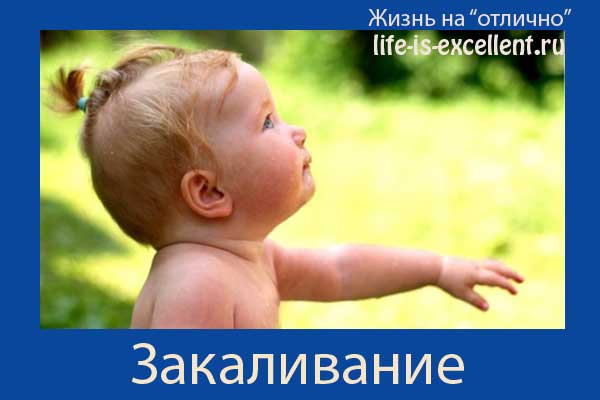
- Start
We begin hardening in calm weather at a temperature in the shade of at least 22°C and for older children 1-2 years old: 20°C
When he gets used to it, the child is exposed even at a temperature in the shade of 18° C, but not lower.
- Child's age
It is recommended to start hardening with light-air baths from 2-3 months of age .
- Duration of the light-air bath
First bath : 3 minutes
After 3-5 days, increase by 2-3 minutes: 5-6 minutes
We continue to increase by 2-3 minutes every 3-5 days and bring the duration of the procedure to half an hour.
30-40 minutes procedure time
With good tolerance, when combining light-air baths with outdoor games, the time when swimming can be increased, but under one condition, that bathing is after sunbathing. And after the water we wipe the child dry.
- Duration of a light-air bath for special children
The duration of air baths for easily excitable children is halved if any changes in well-being are observed.
A weakened child or a child who has suffered a viral disease should not be completely undressed for the light-air procedure. He remains in shorts or panties and a T-shirt.
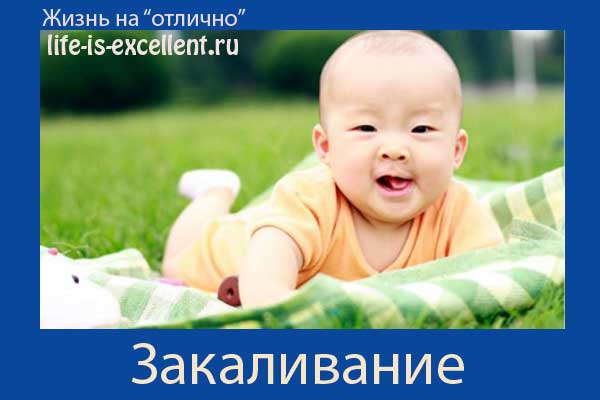
- Hardening as fun
It is advisable that the child actively move and play during the procedure.
- We are afraid
We are afraid of sunburn.
We are afraid of places with drafts, places with gusts of wind, places with dust. What does dusty air mean? Read on.
We are afraid of insect bites.
Air baths for newborns and infants
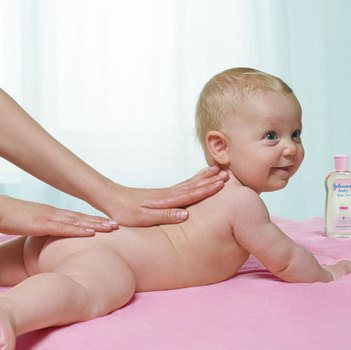
Hardening of babies up to one year old occurs automatically thanks to the usual daily procedures: gymnastics, bathing and walks. There is absolutely no need for parents to expose their newborn baby to extreme temperatures. General hardening procedures, which are indicated for all children, do not pose any danger and do not require special consultation with a pediatrician. Hardening newborns using air baths is one of the simplest procedures. Starting from the moment the child is born, the mother daily, one way or another, hardens him with the help of air baths.
Homemade air baths for newborns
The air temperature in the room where the newborn baby sleeps, where he eats breast milk, and where he will be undressed for air baths should not be lower than 23 degrees. As the child gets older, it may decrease slightly. At the age of one year, a healthy child can be undressed at a temperature of 20 degrees. It is best if the temperature in the room where the baby sleeps naturally has the desired degree. If it is significantly higher, then the room needs to be ventilated more often. At low temperatures in an apartment or house, parents have to additionally heat the rooms with heaters. Oil heaters are most suitable for children's rooms because they are safer. Adjusting the temperature with an air conditioner in a children's room is undesirable: not everything that is good for adults is good for kids. Caring parents know what is needed for a newborn, so they try to make his life safer; for this reason, they will not create a draft in the room when their baby is there. Home air baths, as well as bathing a newborn, are carried out daily, regardless of weather conditions and season. A newborn baby is undressed on purpose or as needed, for example, when a diaper needs to be changed, and left naked for a couple of minutes. At this time, it is good to conduct gymnastics classes or massage, during which the mother can play with the little one and talk to him. In the second month, air baths last 5 minutes, in the third and fourth months - 8-10, and so on. At twelve months, the baby can be without clothes for up to 30 minutes a day.
Air baths while walking
Air baths in the fresh air are also used to harden children. An ordinary walk has a real hardening effect, although the baby is in clothes. In summer, a walk with a newborn baby can last about half an hour, and in winter no more than 15 minutes and only in calm weather, when the thermometer does not drop below -5 degrees. During the first year, the duration of walks increases and reaches several hours in summer and up to one and a half hours in winter. In the summer, a child of the second half of the year who is in the fresh air can be undressed for a few minutes a day to take air and sun baths. This is done in warm, sunny weather at the dacha or in recreation areas. Since doctors are inclined to believe that the sun's rays have an adverse effect on the human body, long exposure of the baby to the sun is unacceptable. It is best if he plays in partial shade, where it is warm, but not hot and there is no direct sunlight.
Hardening newborns and infants using air baths is the simplest; it is given to us by nature itself. Parents can carry out hardening procedures for their child without even knowing about it, because any walk already has a hardening character and strengthens the baby’s health.
Anastasia Ilchenko
Time for air baths
If the child feels well, his hands, feet and nose are warm, he is joyful, then the procedure can be continued. Depending on age, air baths should be increased. The baby is 2 months old, the time for the procedure should be 5-7 minutes, at 3-4 months the time should be increased to 8-10 minutes . When a baby is one year old, his body must breathe for at least 15 minutes.
Air baths for children can sometimes be boring. Therefore, you need to make an effort to entertain the baby and time will fly by. To do this, you can stroke the baby’s delicate skin, count his fingers and toes, you can give him a massage, this is pleasant and useful! If the child has just eaten and has a full stomach, then active games are canceled; it will be enough to read to the baby, sing a song to him or just talk to him. The child really likes the parents' voice, it calms him down and gives him a feeling of security.
Air baths for children not only have a hardening effect, but also, due to the effect of temperature on the body, when oxygen enters through the blood, it activates the work of all internal organs, thereby ensuring the child’s health.
